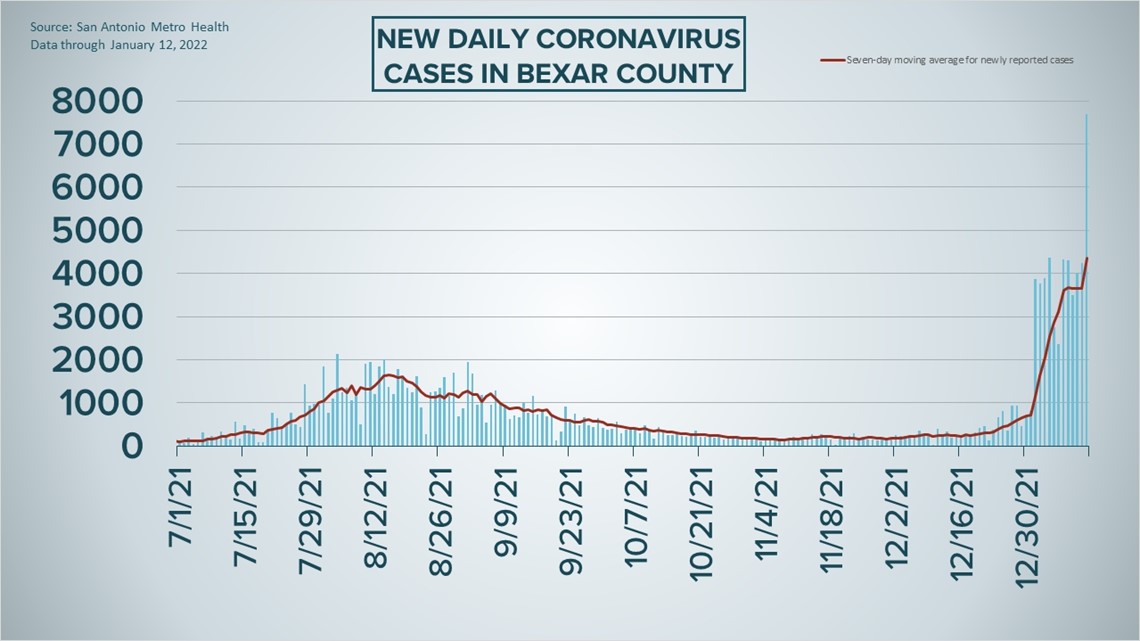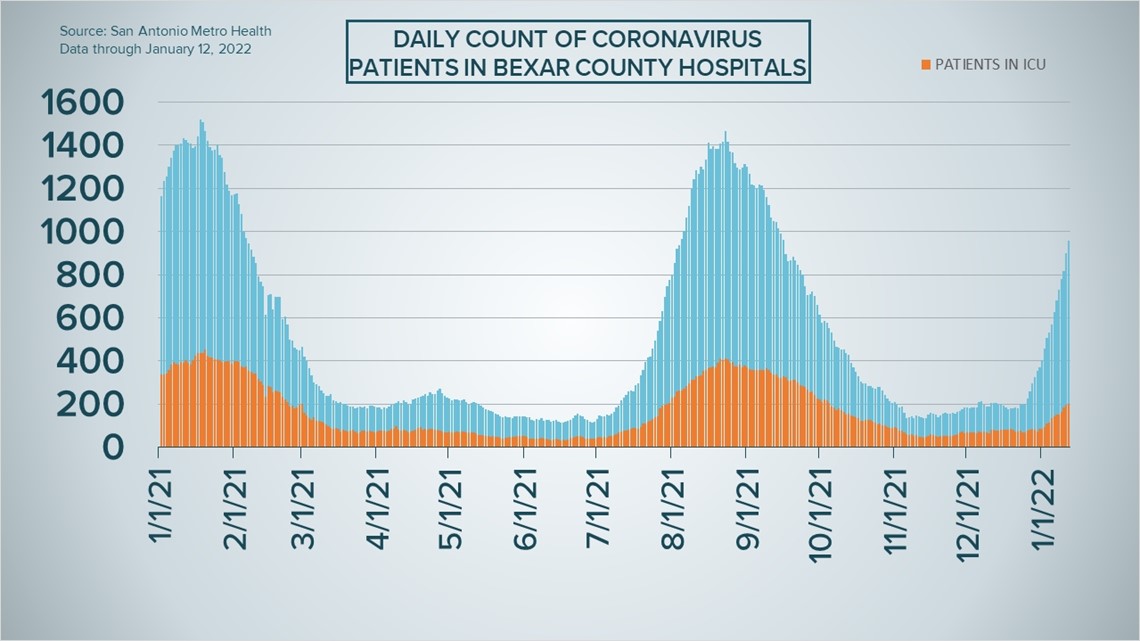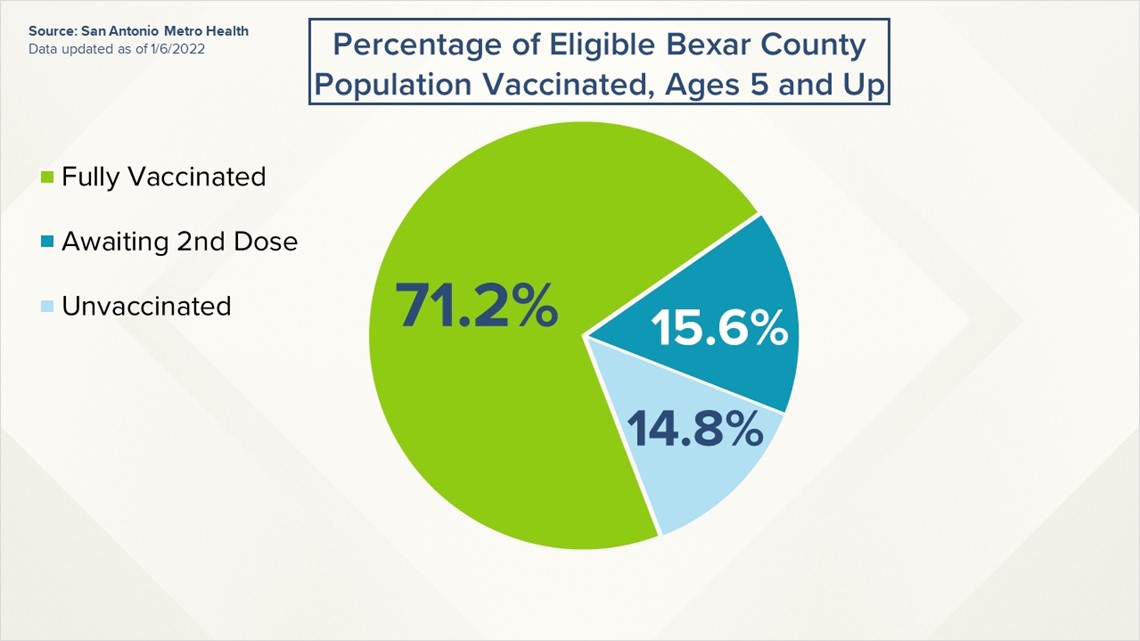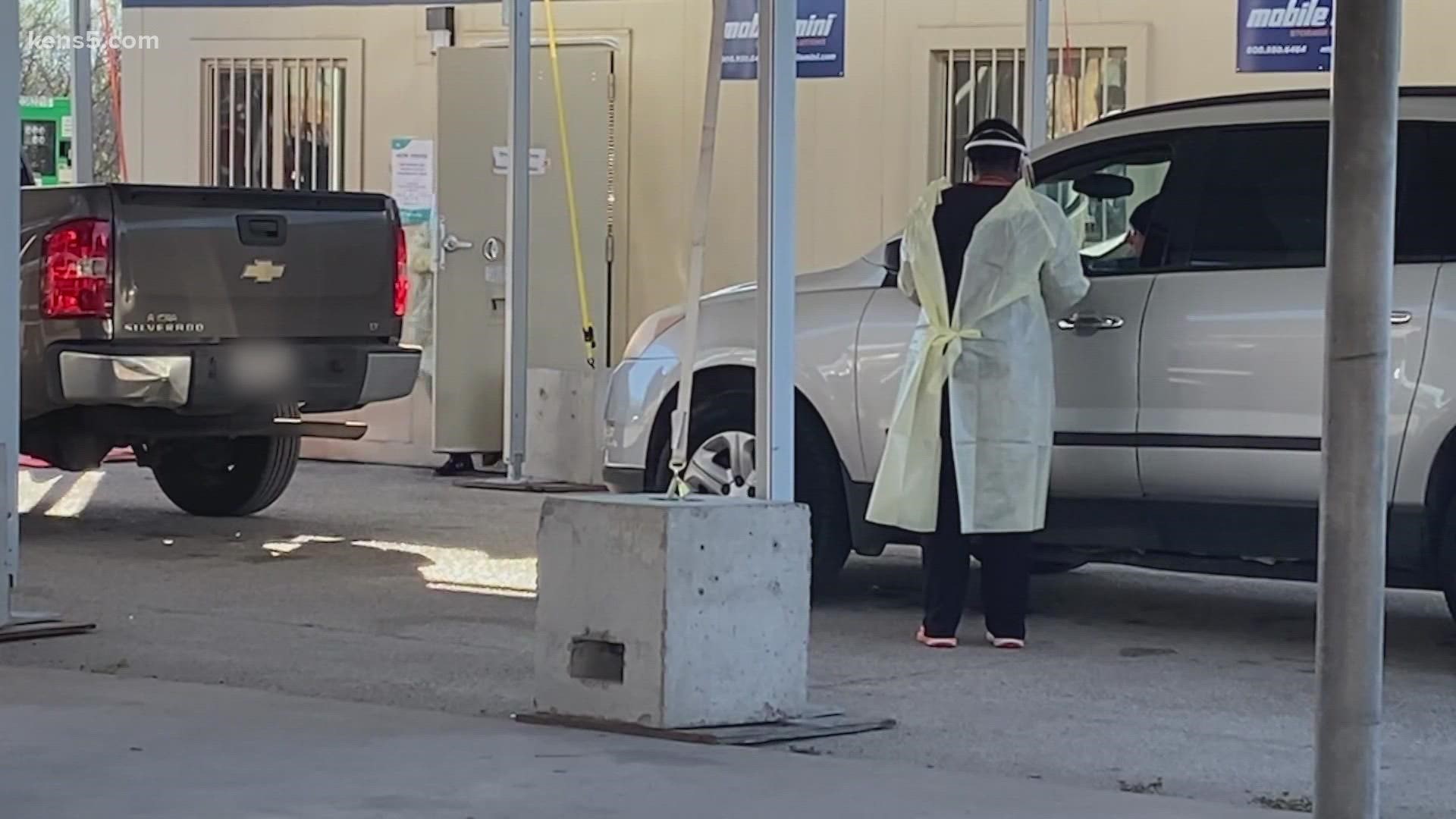SAN ANTONIO — After several days that saw San Antonio-area health authorities report some of the highest daily new-case counts of the ongoing COVID-19 pandemic, Wednesday brought a tally of 7,704 new diagnoses—shattering the previous high by nearly 3,400 and indicating how contagious the dominant omicron variant of the virus continues to be.
The drastically higher case count comes amid reports of long post-holiday lines at testing sites around San Antonio, and on the same day that Texas reports a single-day record for new cases. As a result, the local seven-day average of new cases rose to 4,352, also breaking the previous high of 3,682 earlier this month.
In all, 389,399 Bexar County residents have been diagnosed with COVID-19 since the pandemic began. And 12.6% of those cases have been reported since the start of 2022.
But testing rates have increased dramatically as well. From Dec. 25 through Jan. 2, Metro Health officials reported 29,431 tests; the next week saw that number jump to just under 72,000.
Hospitalizations also rose for the 19th consecutive day as the pandemic tests local health care facilities once more. On Wednesday 958 residents were receiving treatment for COVID-19, up from 989 on Tuesday. Of those, 201 are in intensive care and 79 are using ventilators to help them breathe.
Meanwhile, three more residents have died from virus-related complications, raising the local death toll to 4,997.
More no-cost testing sites have opened across San Antonio this week, but Metro Health also warned that results could be delayed by a few days, citing weather delays and other disruptions.
How Bexar County is trending




Vaccine Progress in Bexar County
The following numbers are provided by San Antonio Metro Health. A full breakdown can be found here.
- 1.644 million eligible Bexar County residents have received at least one dose of the coronavirus vaccine as of Thursday, Jan. 6, representing 86.8% of the county's population eligible (those over the age of 4) to receive a vaccination.
- 1.348 million eligible Bexar County residents are fully vaccinated as of Thursday, Jan. 6, representing 71.2% of the county's population eligible to receive a vaccination.


The CDC states that "when a high percentage of the community is immune to a disease (through vaccination and/or prior illness)," that community will have reached herd immunity, "making the spread of this disease from person to person unlikely."
The City of San Antonio breaks down the vaccination rates by zip code on Metro Health's Vaccination Statistics page.
Coronavirus in Texas
The total number of coronavirus cases in the state since the pandemic began grew by 75,817 on Wednesday, according to the Texas Department of State Health Services, setting a new statewide record. That total includes 61,113 new confirmed cases and 14,704 new probable cases. More details can be found on this page.
Wednesday's figures bring the total number of Texans diagnosed with COVID-19 to more than 5.223 million.
An additional 136 Texans have died from virus complications, meanwhile, raising the statewide death toll to 75,533.
Coronavirus symptoms
The symptoms of coronavirus can be similar to the flu or a bad cold. Symptoms include fever or chills, cough, shortness of breath or difficulty breathing, fatigue, muscle or body aches, headache, new loss of taste or smell sore throat, congestion or runny nose, nausea or vomiting, and diarrhea, according to the Centers for Disease Control.
Most healthy people will have mild symptoms. A study of more than 72,000 patients by the Centers for Disease Control in China showed 80 percent of the cases there were mild.
But infections can cause pneumonia, severe acute respiratory syndrome, kidney failure, and even death, according to the World Health Organization. Older people with underlying health conditions are most at risk.
Experts determined there was consistent evidence these conditions increase a person's risk, regardless of age:
- Chronic kidney disease
- COPD (chronic obstructive pulmonary disease)
- Obesity (BMI of 30 or higher)
- Immunocompromised state (weakened immune system) from solid organ transplant
- Serious heart conditions, such as heart failure, coronary artery disease, or cardiomyopathies
- Sickle cell disease
- Type 2 diabetes
- The CDC believes symptoms may appear anywhere from two to 14 days after being exposed.
Human coronaviruses are usually spread...
- Between people who are in close contact with one another (within about 6 feet).
- Through respiratory droplets produced when an infected person coughs, sneezes or talks. These droplets can land in the mouths or noses of people who are nearby or possibly be inhaled into the lungs.
- Some recent studies have suggested that COVID-19 may be spread by people who are not showing symptoms.
Help stop the spread of coronavirus
- Stay home when you are sick.
- Eat and sleep separately from your family members
- Use different utensils and dishes
- Cover your cough or sneeze with your arm, not your hand.
- If you use a tissue, throw it in the trash.
Find a Testing Location
City officials recommend getting a COVID-19 test if you experience fever or chills, cough, shortness of breath or difficulty breathing, fatigue, muscle or body aches, headache, new loss of taste or smell, sore throat, congestion or runny nose, nausea or vomiting, or diarrhea.
Here's a Testing Sites Locator to help you find the testing location closest to you in San Antonio.
Latest Coronavirus Headlines
- When am I contagious if infected with omicron?
- This San Antonio school district purchased 250,000 KN95 masks for students, staff
- 3rd Chinese city under lockdown, 20 million now affected
- Community Labs opening more COVID testing locations across San Antonio
- Texas A&M - San Antonio students 'frustrated' over in person learning first day back amid COVID spike
- Nirenberg and Wolff pen letter to Gov. Abbott requesting more help to confront COVID surge
- USPS ready to deliver COVID-19 home test kits, postmaster general says
- What's the best way to tell if it's a cold, the flu or COVID?

